Sake can be enjoyed in a wide range of temperatures from 5°C to 55°C which is rare in the world. Taste and aroma of sake changes delicately with temperature. For some sake, a difference of just 5°C can give a completely different taste. Therefore, we have poetic name for every 5°C.
The word “-kan” at the end of each name means “warm sake” (hotter than room temperature) and the word “-bie” means "chilly sake" (cooler than room temperature).
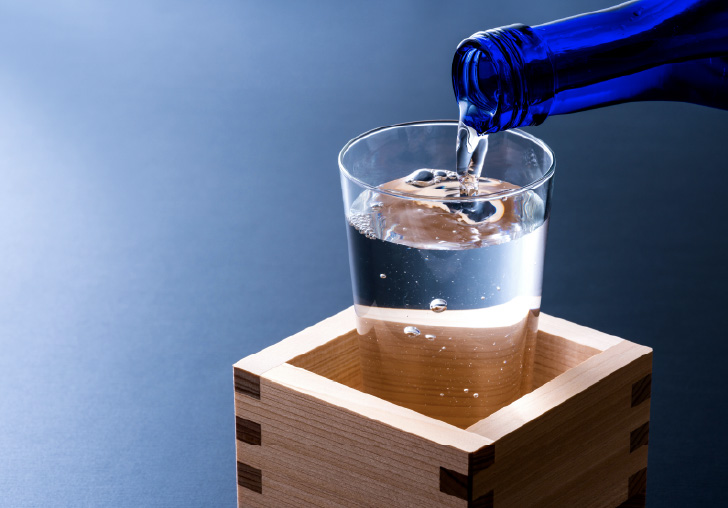
Name for each temperature
Tobikiri means "extremely".
The aroma becomes stronger and the taste is very dry. Not recommended for everyone.
Atsu-kan means Hot sake
It used to be standard temperature of hot sake in the old days but it feels a little too hot nowadays.
The aroma becomes sharp and the taste becomes sharp and dry
Jo means Upper in Japanese
At this temperature, steam rises when you pour sake into a sake cup. Recommended temperature
Nuru means lukewar
Temperature same as body temperature or slightly higher. For sake which is suitable for warm temperature, taste becomes richer and more delicious when sake is warmed at this temperature range.
Hitohada means human skin.
The temperature is the same as body temperature but it feels a little lower when you drink it. The aroma of rice stands out at this temperature.
Hinata means sunny spot.
You don't feel cold or hot when you drink it. It has a slight aroma and a smooth taste.
Jo-on means room temperature. Also, sometimes called “Hiya (cool).
Both aroma and taste are soft. We recommend you to taste each sake at this temperature first as you can enjoy the character of each sake as it is.
Suzu-bie means refreshingly cool.
It's a temperature while after you take out sake from refrigerator. You can enjoy gorgeous aroma and mellow taste of Ginjo type sake at this temperature.
Hana means flower. This was named after the cold wave in early spring when the cherry blossoms begin to bloom.
Temperature refrigerated for several hours. The aroma is modest and you can enjoy the fine texture of sake. Good for Ginjo type sakes
Yuki-bie means Snow Chilling.
Temperature of sake chilled with ice water. Aroma is barely felt and taste does not spread. Recommended for sparkling sakes.
In practice, temperature of sake is often broadly called in 3 range, Warmed sake (Atsu-kan), Room temperature (Jo-on) and Chilled sake (Rei-shu).
Ginjo-type sake is best served chilled or at room temperature, Honjozo-shu and Junmai-shu can be enjoyed in all temperature ranges.
Sake vessels come in a variety of materials and shapes. These have the effect of changing not only the appearance but also the taste and aroma. So, it is one of the great pleasures of sake to try out the combination of sake type, temperature and sake vessel.
are 3 factors to select sake vessel.
1.Caliber
If the caliber of the vessel is small, sake enters the mouth in a long and straight line. Also, it is necessary to turn up the face to drink. Because of these, sake reaches the back of the mouth and quickly leaves the back of the throat.
You can feel the smooth texture and refreshing taste with narrow vessel.
With the vessel with wide caliber, the sake will flow horizontally in our mouth and you can feel the aroma closer to you. Sake spreads to the left and right of the mouth until it reaches the throat, and the aftertaste is rich.
So, if you want to enjoy the gorgeous aroma of sake, use vessel with wide caliber. If you want to enjoy refreshing taste of sake, use a vessel with small caliber.
2.Shape
The shape of the vessel also affects the aroma and taste of sake. The wide caliber and tapered bottom type bring out the aroma and refreshing taste of sake. The rounded shape type, whose bottom is wider than the caliber, brings out the flavor of the sake and make it particularly suitable for hot sake.
3.Material and thickness
If you drink sake with thick vessel, you will feel the mellow texture and if you drink it in a thin vessel, you will be able to enjoy its sharpness. Thin sake vessel is recommended for the Ginjo type sakes as they have gorgeous aroma and refreshing taste. Thick vessel is good for sipping full-bodied sake such as Junmai-shu.
The characteristics of each material are as follows.
Glass vessels are perfect for the pure and clear image of sake because of their refreshing appearance. The biggest feature of glass is that it is transparent. Unlike sake vessels made from other materials, you can enjoy the color and viscosity of sake with your own eyes. It does not have the smell of metal and it does not absorb water like potteries or porcelains. So, it does not interfere with the original aroma of sake. When you want to enjoy a delicate taste of chilled Ginjo-type sake, it's perfect choice. Wine glasses are also widely used these days.
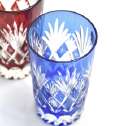
Pottery is made by kneading clay and firing it at a high temperature. It is often used as sake vessel. Pottery is said to give sake a round and soft texture. Because it is thick, it is suitable to drink full-bodied Junmai-shu. Another major feature of pottery is its low thermal conductivity. It is often used for hot sake as it keeps sake warm for a long time. You can enjoy the various appearances of pottery as it changes by the compatibility of the glaze and clay applied to the surface of the pottery and the way it is fired.

Porcelain is made from stone powder and becomes semi-glassy after firing. So, you can enjoy the refreshing taste. Compared to Pottery, it has a thinner and smoother texture and is said to have a sharper taste which makes it suitable for Honjozo-shu. It’s a versatile material that can be used for a wide range of purposes, from cold sake to hot sake. Many of them have different paintings on the surface and you can enjoy the beautiful appearance.
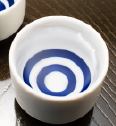
Lacquerware has high heat insulation and the temperature does not affect taste and aroma of sake. Therefore, hot sake can be enjoyed hot and chilled sake can be enjoyed chilled. You can enjoy luxury time with rich and complex taste of aged sake in lacquerware vessel with your favorite design.
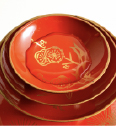
In addition to the above, wooden vessels and metal (mainly tin) sake vessels are also widely used.
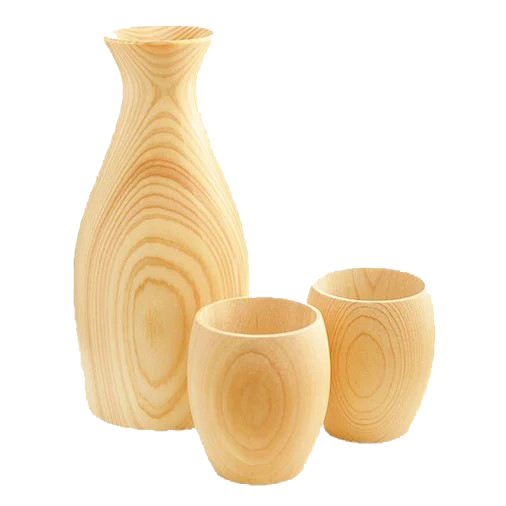
Sake avenue's sister site Myfav Japan Shop offers you sake cups. Please visit the link below.
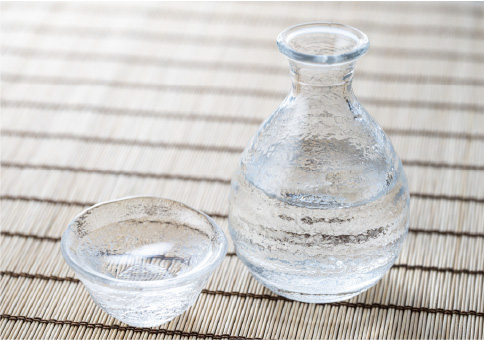
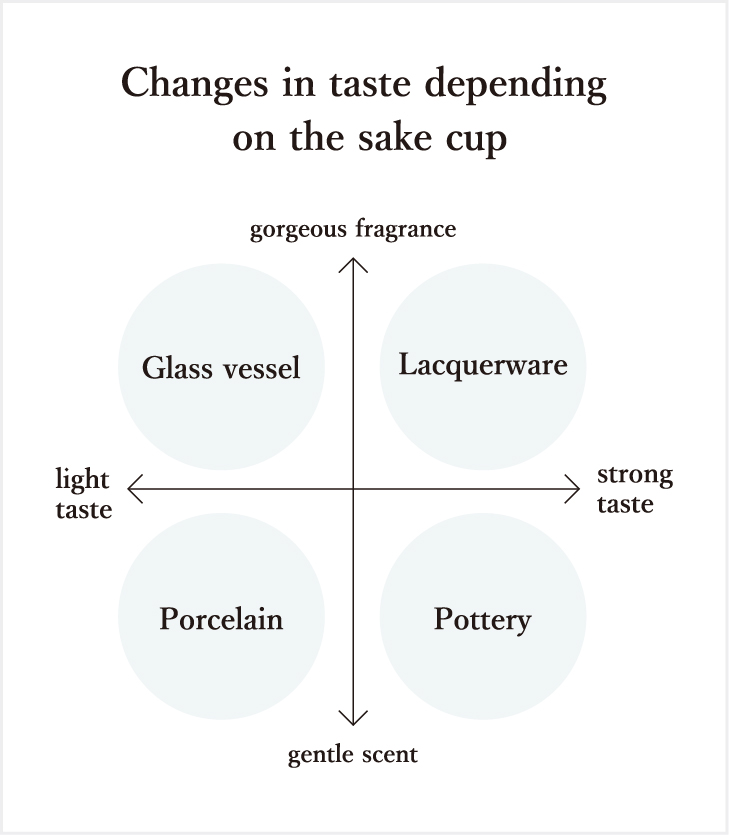
ContactPlease feel free to contact us